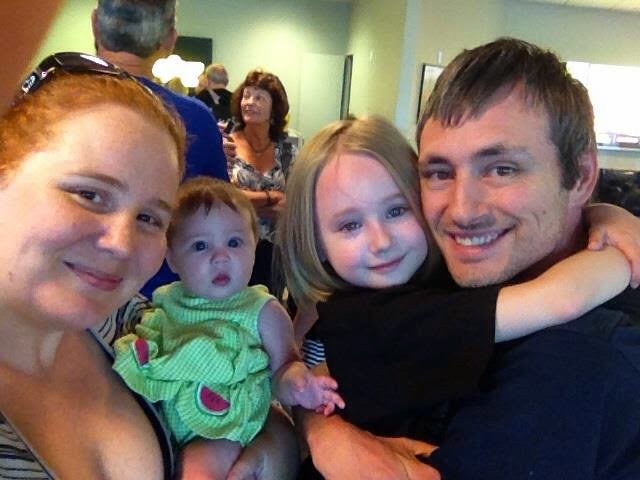Traditional Voice to Unified Voice
Analog Voice Terms
Loop Start: Relies on connecting 'tip' and 'ring' wires in an analog device to complete an electrical circuit and causing electrical signal to flow from PSTN CO. Susceptible to Glare
Glare: Caused when a user signals the PSTN CO at the same time that a call is coming in, causing that incoming call to be routed to the user that just picked up the phone
Ground Start: Relies on grounding the analog wires which causes the PSTN to send electrical signal to the device, only used on outgoing calls so this can prevent Glare
Analog Challenges
Signal boosting required as distance increases, boosting also boosts line noise
Separate physical lines required for each phone line causes scaling issues
Digital Voice Terms
Digitizing: Process by which analog vice signals are changed to digital numbers
Time-Division Multiplexing: Allows voice networks to carry multiple conversations at the same time using time-slots for the digitized conversations
T1: Digital circuit comprised of 24 seperate 64-kpbs channels known as DS0, each one of which supports one call. Used in US, Japan, Canada
E1: Digital circuit comprised of 30 seperate 64-kpbs channels known as DS0, each one of which supports one call. Used in areas other than US, Japan or Canada
Channel-Associated Signaling: Binary bits for voice are stolen for signalling, also known as Robbed-Bit Signaling (RBS). Uses eighth bit on every sixth sample in each channel
Common-Channel Signaling: Dedicated T1 channel for signaling information. Also called out-of-band signalling. Most popular method is Q931. For T1 circuits the 24th time-slot is used for signalling, for E1 the 17th time-slot is used for signalling
PSTN Concepts
Analog Telephone: Common device using PSTN, converts audio to electrical signals
Local Loop: Link between customer premises and telecom provider
CO: Provides services on local loop such as signalling, digit collecting, routing calls and call setup/teardown
Trunk: Connection between CO or private switches
Private Switch: Used for business to operate internal PSTN instead of each phone having separate connection to external CO
Digital Phone: Converts audio into digital signal, more efficient than analog
PSTN Numbering Plan
E.164 Numbering Plan was created by ITU and contains:
- Country Code
- National Destination Code
- Subscriber Number
North American Numbering Plan uses:
- Country Code
- Area Code
- CO/Exchange Code
- Station Code
PBX/Key System Concepts
PBX/Key System: Internally manages phone calls/phones, has several different kinds of cards and equipment. Calls internally are controlled by PBX/Key System, calls to/from PSTN utilize trunk between PBX/Key System and PSTN CO
Line Cards: Connects telephone handsets to PBX system
Trunk Cards: Connects PBX to PSTN or other PBX Systems
Control Complex: Intelligence behind PBX System, performs call routing, setup/teardown and management functions
VOIP Business Benefits
Reduces cost by allowing use of WAN connections instead of PSTN charges
Reduces cost of cabling, requiring single Ethernet drop
Centralized dial-plan and command/control of calling
Move/Add/Change costs are eliminated
Softphones allow users to use headset and computer as a phone instead of needing hardware
Unified messaging such as email, fax, voice mail
Multiple device ring increases productivity by allowing users to be reached on multiple devices
Feature-rich communication such as screen popup when customer calls into a call center
Compatible standards to allow different vendors to work together
Converting Voice to Data
Average human ear can hear frequencies from 20-20,000 Hz
Human speech uses frequencies from 200-9000 Hz
Telephone channels usually transmit 300-3400 Hz
Nyquist Theorem produces frequencies from 300-4000 Hz
Nyquist Theorem: Accurately reproducing an audio signal require sampling the signal at twice its highest frequency, ie, for a 300-4000 Hz signal to be reproduced would require 8000 samples per second
Quantization: Process by which analog waves are converted into digital signal
1 byte represents value of 0-255, voice scale must be between 127 and -127
Amplitude values common to voice are more tightly spaced
Sampling breaks 8 binary bits in each byte into two components: numeric representor and positive/negative value
G.711 a-law used everywhere except US and Japan, 64kbps
G.711 u-law used in US/Japan, also 64 kbps but sampling valuies are reversed (1 bits are 0 and 0 bits are 1)
Compression measures applied to lower bandwidth requirements
G.729 compresses by sending sample once and instructing device to play that sound for a time value, reduces bandwidth to 8kbps
Mean Opinion Score: Rates quality of voice codecs
G.711 and G.729 are common codecs for all Cisco IP Phones
Digital Signal Processors
DSP: Hardware chip that provides sampling, compression, encoding functions to audio coming into the router
PVDM: Packet Voice DSP Modules, bundle multiple DSPs into one chip
DSP/PVDM can be added directly to the router's motherboard (if supported) or as part of a Network Module
Based on complexity of codec, PVDMs can handle more or less audio calls at once
RTP/RTCP
RTP: Real-Time Transport Protocol, Transport Layer protocol, uses UDP. Provides time stamps and sequence numbers to UDP packet so it can be reassembled in order (sequence) and reduce jitter (time stamp) on remote end. Uses even UDP port between 16384 and 32767 for each audio stream (a two way call will have two one-way RTP streams)
RTCP: Real-Time Transport Control Protocol, Used for statistics reporting. Picks odd number UDP port range between 16384 and 32767.
Reports:
- Packet count
- Delay
- Packet Loss
- Jitter
If RTP stream uses 17654, RTCP will use 17655

